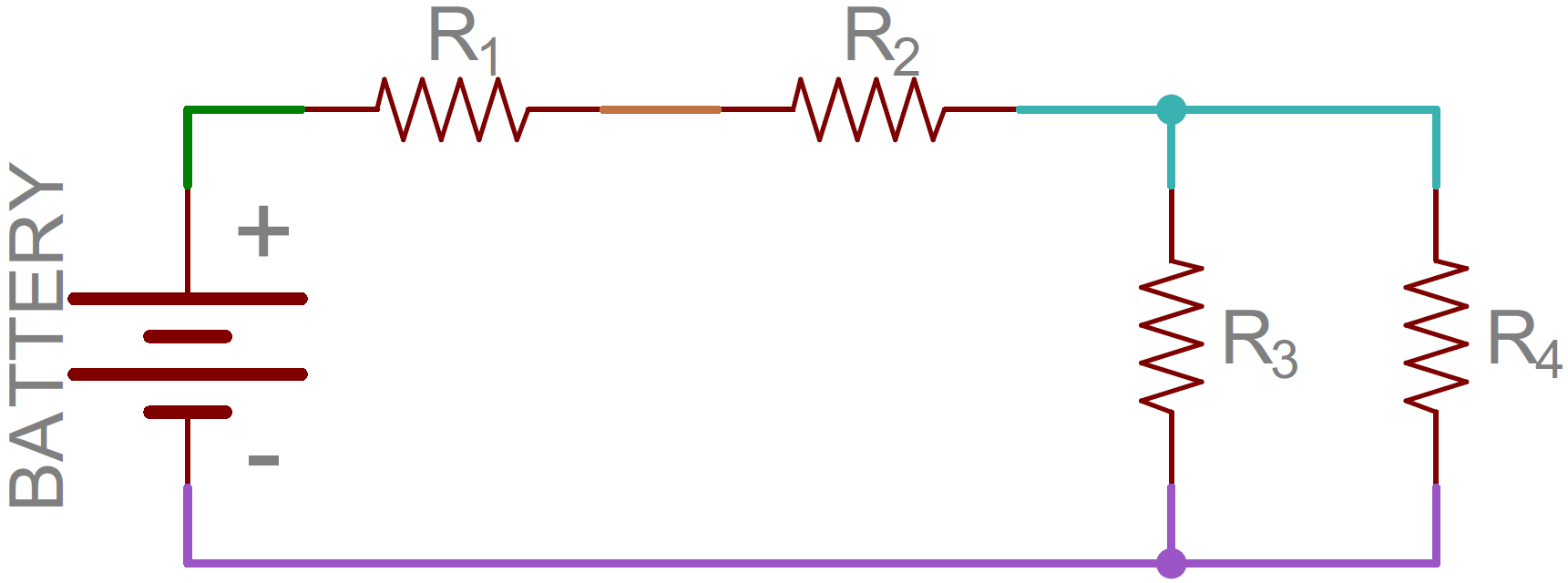
Series circuits are an essential topic in the realm of physics and electrical engineering. They are the foundation upon which many electrical devices and systems are built. Understanding series circuits is crucial for comprehending how electricity flows, circuits behave, and components interact with each other.
In this article, we will explore 19 unbelievable facts about series circuits. Whether you are a student studying physics, an enthusiast in the field of electronics, or simply curious about how series circuits work, this article will provide fascinating insights into this fundamental concept.
From the basic principles of series circuits to their practical applications in everyday life, we will delve into a wide range of interesting facts that will deepen your understanding and pique your curiosity. So, let’s embark on this electrifying journey through the world of series circuits!
Key Takeaways:
- In a series circuit, the current stays the same throughout, making it easier to predict and calculate. If one component fails, the whole circuit is affected, unlike in parallel circuits. It’s like a team where everyone has to keep up for the game to go on!
- Series circuits are like the backbone of many electronic devices, from holiday lights to household appliances. They help control current flow and are even used in Christmas tree lights to keep the brightness safe. It’s like the secret behind the scenes that keeps everything running smoothly!
The concept of a series circuit dates back to the early discoveries in electrical theory.
Series circuits were first explored by scientists and inventors in the late 18th and early 19th centuries during the dawn of electricity.
In a series circuit, the current remains constant throughout the entire circuit.
In a series circuit, the current flowing through each component is the same, making it easier to calculate and predict the behavior of the circuit.
The total resistance in a series circuit is equal to the sum of individual resistances.
In a series circuit, the total resistance encountered by the current is the algebraic sum of the individual resistances present in the circuit.
If one component in a series circuit fails, it will interrupt the flow of current throughout the entire circuit.
Unlike parallel circuits, a single component failure in a series circuit breaks the entire circuit, causing all other components to lose current flow.
The voltage across each component in a series circuit adds up to the total voltage supplied.
In a series circuit, the voltage supplied by the power source is divided among the components, with the sum of individual voltage drops adding up to the total voltage supplied.
Series circuits are commonly used in holiday lights, where a single bulb being removed causes the entire string to go dark.
This characteristic of series circuits is exploited in holiday light strings to ensure that if one bulb fails, the entire string does not remain lit.
The total resistance of a series circuit increases as more resistors are added.
As more resistors are added in a series circuit, the total resistance increases, resulting in a decrease in current flowing through the circuit.
Series circuits are used in voltage dividers to obtain desired voltage levels from a higher voltage source.
By utilizing the principle of voltage division in series circuits, voltage dividers can be used to obtain specific voltage levels for various electronic applications.
The power dissipated by each resistor in a series circuit is directly proportional to its resistance value.
In a series circuit, the power dissipated by each resistor is determined by its individual resistance, with higher resistance values resulting in greater power dissipation.
Series circuits are widely used in electronic devices such as LED displays and remote controls.
The simplicity and predictability of series circuits make them ideal for incorporating into various electronic devices for consistent and controlled current flow.
The voltage drop across each component in a series circuit is determined by Ohm’s Law.
Ohm’s Law, which states that the voltage drop across a resistor is equal to the product of its resistance and the current flowing through it, applies to each component in a series circuit.
Series circuits have a higher total resistance compared to parallel circuits.
Due to the cumulative effect of resistance in series circuits, they generally have a higher total resistance than parallel circuits with the same components.
The total voltage applied to a series circuit is divided proportionally among the resistors.
In a series circuit, the voltage applied is distributed among the resistors according to their individual resistance values, establishing specific voltage drops across each component.
Series circuits provide a simple way to control the brightness of multiple connected bulbs.
By adding or removing bulbs in a series circuit, the overall resistance changes, thereby affecting the brightness of all the bulbs in the circuit.
Series circuits are used in Christmas tree lights to prevent excessive brightness and ensure safety.
The use of series circuits in Christmas tree lights ensures that if one bulb burns out or is removed, the entire string remains at a safe level of brightness.
In series circuits, the voltage drop across each resistor is proportional to its resistance value.
The higher the resistance of a resistor in a series circuit, the larger the voltage drop across it, demonstrating the relationship between resistance and voltage.
Series circuits are found in household appliances such as televisions and refrigerators.
Series circuits play a vital role in household appliances, ensuring that the appropriate voltage and current are delivered to the various components.
Series circuits are commonly used in battery-powered devices.
Battery-powered devices often utilize series circuits for their simplicity and efficiency in delivering a steady current flow from the limited power source.
Series circuits are the foundation for more complex electrical circuits such as parallel-series combinations.
Understanding series circuits is crucial to comprehending more intricate circuit configurations where series and parallel components are combined to meet specific requirements.
These astonishing facts about series circuits demonstrate the significance and widespread application of this fundamental electrical concept. From their historical origins to their modern applications, series circuits continue to play a crucial role in powering various electronic devices, controlling current flow, and providing a deeper understanding of electrical principles.
Conclusion
Series circuits are a fundamental concept in physics and understanding their properties can give us valuable insights into the behavior of electric circuits. In this article, we have uncovered 19 unbelievable facts about series circuits that showcase both their practical applications and fascinating characteristics.
From the fact that the total resistance in a series circuit is simply the sum of the individual resistances to the surprising revelation that a high resistance bulb will dimly light up in a series circuit, these facts shed light on the behavior of current, voltage, and resistance in series circuits.
Furthermore, we explored the concept of voltage drops in series circuits and how they lead to a shared current throughout the circuit. We also touched upon the significance of Kirchhoff’s voltage law in unlocking the mysteries of series circuits.
By delving into these unbelievable facts, we have deepened our understanding of series circuits and solidified their importance in the realm of physics and electrical engineering. Whether you’re a student, enthusiast, or professional in the field, these facts provide a fascinating glimpse into the world of series circuits.
FAQs
Q: What is a series circuit?
A: A series circuit is a type of electric circuit in which the components are connected end to end, allowing only one path for current flow.
Q: What is the total resistance in a series circuit?
A: In a series circuit, the total resistance is simply the sum of the individual resistances.
Q: Are voltage drops the same in a series circuit?
A: Yes, in a series circuit, voltage drops are the same across each component. The sum of the voltage drops across each component equals the total voltage supplied.
Q: Can different components have different currents in a series circuit?
A: No, in a series circuit, the current is the same throughout every component.
Q: Are series circuits used in everyday life?
A: Yes, series circuits are commonly used in various applications, such as in Christmas tree lights, flashlights, and household electrical wiring.
Q: What happens if one component fails in a series circuit?
A: If one component fails in a series circuit, the entire circuit will be interrupted, and no current will flow.
Unraveling series circuits' secrets is just the beginning of your electrical journey. Dive deeper into understanding how resistors shape current flow and impact circuit behavior. Expand your knowledge by exploring fascinating facts about electronics, from their humble beginnings to cutting-edge applications. And don't forget to investigate current's captivating characteristics, which breathe life into every electrical device you encounter. Keep your curiosity charged as you continue to explore the electrifying world of electrical engineering!
Was this page helpful?
Our commitment to delivering trustworthy and engaging content is at the heart of what we do. Each fact on our site is contributed by real users like you, bringing a wealth of diverse insights and information. To ensure the highest standards of accuracy and reliability, our dedicated editors meticulously review each submission. This process guarantees that the facts we share are not only fascinating but also credible. Trust in our commitment to quality and authenticity as you explore and learn with us.


